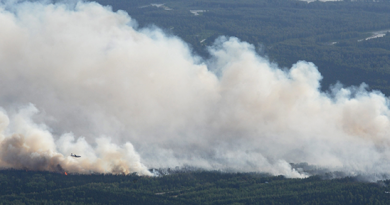Experts question Finland’s energy decisions, data

Professors at the Lappeenranta University of Technology charge that Finland’s energy decisions are made based on misleading data.
Officials at the Ministry of Employment and the Economy say they’re not worried.
Professors at the Lappeenranta University of Technology (LUT) say that Finland’s energy decisions are made based on misleading data from the International Energy Agency (IEA). They charge that the body has for decades consistently underestimated the potential of renewable energy sources.
Finland lags significantly behind its Nordic neighbours in use of renewables. Rather, it mostly relies on nuclear power and fossil fuels, primarily imported from Russia. Far-reaching, controversial decisions about new nuclear power plants, for instance, are made largely by the Ministry of Employment and the Economy based on IEA data.
“New technologies and opportunities are significantly underestimated, at least within the parameters that are visible, and which have been used as a basis for decision-making,” says Lassi Linnanen, Professor of Environmental Economics and Management at LUT.
The IEA, for instance, forecasts that renewables will only produce 14 percent of the world’s energy by 2030, whereas growth figures suggest the figure will be closer to 60 percent.
More specifically, the IEA has predicted that solar electricity investment costs in Europe will not drop below 1,000 dollars per kilowatt until after the year 2050 – although the cost has already fallen below that level this year as solar systems become cheaper and more efficient. Christian Breyer, LUT’s Professor of Solar Economy, predicts that the cost will drop to less than half of today’s level by 2050. Meanwhile the Berlin-based Energy Watch Group calculates that wind power adoption has been four times higher than IEA predictions.
Decisions made by inner circle
Officials at the Ministry of Employment and the Economy’s energy department say they’re not worried that Finland’s energy policy decisions are at least partly based on questionable calculations.
“Isn’t this quite normal that various types of calculations are made?” asks Riku Huttunen, head of the ministry’s energy department. “What’s essential is that they are discussed, and that conclusions are drawn from these comparisons and debates,” he says.
Researchers and professors interviewed by Yle counter that these questions are not being debated. Linnanen says national energy policy decisions are made in secret by a small circle, without input from the scientific community. He points out that no-one outside this group knows which data is being used, as this information is not public. The financial daily Taloussanomat asked to see the calculations used as the basis for energy policy, but courts have ruled that the ministry is not obliged to release its energy models.
“These models are self-fulfilling in a way,” argues Linnanen. “The results you get are based on the assumptions you use. If you assume that something has a small growth percentage, then you decide that it’s not worth investing in.”
The ministry’s Huttunen defends keeping data in-house, saying: “If it’s a question of an Excel chart that we sort of use as a notepad when we make these calculations, then we have a Supreme Administrative Court decision that it’s not really of any use to anyone for this kind of material to be made public.”
“That certainly sounds very odd,” says LUT’s Linnanen. “This is a question of societal decision-making. It’s difficult to see how there could be matters related to business secrets when we’re drawing up national policy. Finland is not a company and Finland doesn’t – or at least shouldn’t – have anything to hide in this regard.”
Policy vs. national interest
Linnanen and many other energy-sector professors call for alternative energy sources to be included in an objective manner in the state decision-making process – and for the parameters and calculation methods used in choosing future energy usage to be public and subject to evaluation by the scientific community.
“Otherwise the model is like a black box that something comes out of. There’s no scientific transparency,” says Linnanen. “Finland is a single-truth country. Energy policy is set more on energy producers’ terms than those of energy users. That is not in the interest of the Finnish people.”
More co-operation next time?
Within the next year, Finland is to draw up a national energy and climate strategy for the coming years.
“I believe that this energy strategy can be created in a much broader and more participatory manner,” Linnanen says.
On this Huttunen agrees.
“That is our wish,” he says. “We will certainly be glad to involve experts and the public at large. Openness is certainly an essential thing for us.”
Related stories from around the North:
Canada: Energy challenges in Canada’s North, Eye on the Arctic
Finland: IEA under-estimates renewable energy: expert, Yle News
Sweden: Will Sweden be able to produce enough energy in the future?, Radio Sweden
United States: Reindeer, oil at Energy Summit, Blog by Mia Bennett



